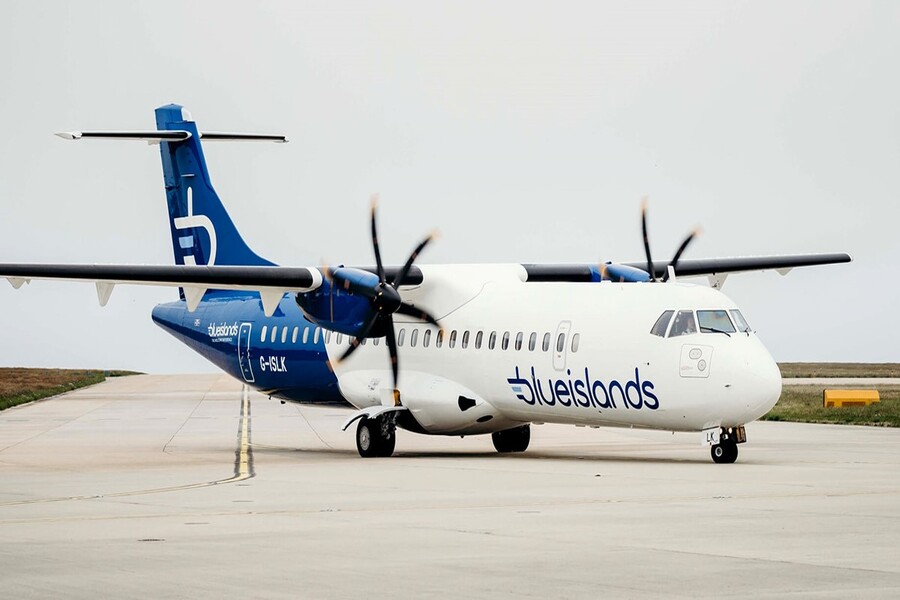Published on
November 17, 2025
Blue Islands Airline’s sudden halt in operations has sent shockwaves through the travel sector, disrupting affordable flight options to key destinations including the UK, Belgium, and the Channel Islands. The airline, known for providing cost-effective connections, especially for regional travel, has left countless passengers stranded. This abrupt cessation of services has led to significant travel disruptions, with many travelers scrambling to find alternative flights or seek refunds, further complicating an already challenging travel landscape.
Regional airline Blue Islands has ceased all operations, leaving hundreds of passengers stranded across the Channel Islands and the UK. On November 14, 2025, the carrier abruptly canceled all flights, confirming that it had ceased trading. The sudden shutdown took both passengers and employees by surprise, creating significant disruption in air travel across the region. Passengers were instructed not to travel to airports, and the UK Civil Aviation Authority issued a similar advisory, urging travelers to avoid making their way to terminals.
Flights from key destinations such as Jersey, Guernsey, and several UK cities were grounded, affecting a range of routes, including popular connections to Bristol, Leeds Bradford, and Southampton. Seasonal services to international destinations, such as Paris and Belgium, were also canceled. The airline’s last flight, which landed in Jersey on the evening of November 14, marked the final operation before the airline’s network went completely dark.
The sudden collapse of the airline has had immediate consequences for travelers and the wider region. Passengers who were due to fly with Blue Islands were left stranded, unsure of their next steps. The situation was particularly challenging for island communities that rely on Blue Islands for their connectivity to the UK and Europe. These disruptions are set to create long-term challenges for residents and businesses that depend on reliable air links.
Approximately 100 employees have lost their jobs as a result of the airline’s closure. Blue Islands had received government support in the form of an £8.5 million loan during the pandemic to help sustain its operations. However, a significant portion of the loan remains unpaid, and this financial strain appears to have contributed to the company’s downfall.
Island officials have acknowledged the severity of the situation and are working to ensure that essential air connections are maintained. The government of Jersey, for example, has expressed concerns over the collapse’s potential impact on the island’s long-term air connectivity and is now exploring options to safeguard air links for its residents. In the short term, other regional carriers, such as Aurigny, are being pressed into service to accommodate stranded passengers. This will likely increase pressure on regional airlines already stretched thin by high demand and seasonal fluctuations.
The collapse of Blue Islands is not an isolated incident but part of a broader trend of travel disruptions impacting airlines across the globe. The airline industry has faced a series of challenges over the past year, including staffing shortages, rising fuel costs, and increased competition for available slots at major airports. More recently, weather disruptions have compounded these issues, causing delays and cancellations worldwide.
In Australia, for instance, Jetstar and Virgin Australia experienced significant cancellations and delays in the wake of weather disruptions. These issues were exacerbated by staffing shortages that made it difficult for the airlines to reschedule affected flights or provide alternative solutions for travelers. Airports in major Australian cities such as Sydney and Melbourne experienced major operational difficulties as a result. Additionally, international carriers like Air New Zealand and United Airlines have also reported disruptions in their operations due to similar challenges. The Australian travel industry has found itself struggling with both weather-related disruptions and broader operational issues, highlighting the fragility of the global air network.
In both the case of Blue Islands and the Australian airline disruptions, the common thread is the vulnerability of regional air travel networks. The rapid decline of a single regional carrier can have a domino effect, disrupting travel for thousands of passengers and creating significant economic ripple effects. For island communities such as Jersey and Guernsey, where air travel is often the only link to the mainland, the closure of a carrier like Blue Islands can have a particularly severe impact. These communities could face long-term consequences as they seek alternative solutions for essential travel.
The rise of travel disruptions across the globe has also underscored the need for greater resilience in the air travel industry. As airlines face challenges with staffing, infrastructure, and extreme weather, governments, industry stakeholders, and aviation regulators must work together to build a more sustainable and adaptable air travel system. Solutions could include better planning for extreme weather events, investment in airport infrastructure, and measures to address the current staffing shortages that many airlines are facing.
The ongoing disruption to air travel has further emphasized the need for alternative transportation options. For regions like the Channel Islands, where island communities are heavily reliant on air services, the collapse of a regional carrier can cause more than just inconvenience—it can disrupt daily life, businesses, and essential services. As a result, these disruptions serve as a reminder of the importance of securing diverse transportation links to safeguard against potential crises.
Blue Islands Airline has suddenly ceased all operations, disrupting affordable flights to the UK, Belgium, and the Channel Islands, leaving countless passengers stranded due to the unexpected shutdown of services.
The collapse of Blue Islands is a cautionary tale for the airline industry, illustrating how quickly operations can go from routine to crisis. Travelers worldwide are feeling the effects of the broader disruptions, and the vulnerability of regional air networks is now front and center. As governments and airlines grapple with the aftermath, it is clear that the industry will need to adapt to ensure that such disruptions do not become more common in the future. For the time being, passengers who were affected by Blue Islands’ sudden closure will need to find alternate means of travel, while the airline industry as a whole takes stock of its ongoing challenges.
